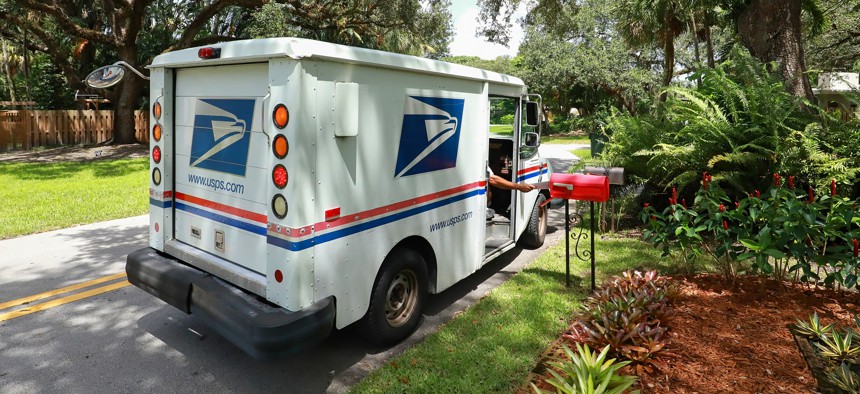Postal Service Will Focus on Big Data, Digital Platforms Over Next 10 Years

JillianCain/istockphoto
As the Postal Service looks at the next 10 years, the agency inspector general looked back at the last decade of technology innovation to see what’s worked and what hasn’t.
The U.S. Postal Service has seen the most progress in implementing big data, artificial intelligence and digital platform technologies—including apps, smart barcodes and QR codes—over the last 10 years, and will continue to focus on these technologies for the next decade, according to a report from the agency inspector general.
Since 2011, the IG has published more than 30 reports examining the Postal Service’s innovation effort. Those audits have focused on four areas: mail innovations, data analytics, autonomous technologies and intelligent infrastructure—with mixed results.
Mail innovations have been central to the Postal Service’s efforts, centered on informed delivery, a free app that allows users to preview mail—letters and packages—and make decisions on delivery options; and QR codes, which businesses, political campaigns and others use as part of marketing efforts.
While mail innovations are largely focused on attracting new postal customers, the data analytics technologies are being used to improve and optimize Postal Service operations.
The agency doesn’t have trouble collecting data, the IG noted, but putting the “massive quantities of data” being generated daily to good use has been a challenge.
“Data-driven advanced algorithms and analytics can play a critical role in the design of … new, last-mile solutions,” the report states. “Postal infrastructure is—and will continue to be—supported and enhanced by the use of big data across the supply chain.”
The Postal Service launched the Intelligent Mail barcode, or IMb, program in 2006 to track letters and packages and use the resulting data to improve mail delivery.
As with other programs, IMb is also being used on the business side as an offering for commercial mailers as part of the Informed Visibility-Mail Tracking and Reporting, or IV-MTR, program. Launched in 2018, the IV-MTR program allows marketing mailers to track each piece of mail in a campaign in near real-time.
Big data collection is also being looked at for optimizing delivery routes, though these efforts remain “work in progress,” the report states, citing experts.
The Postal Service is also using data as part of its artificial intelligence projects, such as the AI Virtual Agent chatbot and kiosks set up at participating Departments of Motor Vehicles.
While all of these projects are moving along at various stages, innovations categorized under autonomous technologies and intelligent infrastructure haven’t borne out for the Postal Service, including autonomous delivery vehicles, blockchain and the internet of things.
“The Postal Service’s engagement with these technologies has been limited to research and testing so far,” the report states. “Experts, however, believe these innovations will become increasingly impactful in the coming years.”
The agency recently released a 10-year plan for the entire agency, which included a technology component. The strategy calls for spending $2.4 billion on tech initiatives in the next decade, approximately 6% of funding required to make the plan a reality.
The strategy prioritizes development of digital platforms, big data analytics and AI and machine learning.
Other technology areas including the internet of things and security—including biometrics for identity services—though these will have “a more limited role in the 10-year plan,” the report states.
The report cites several hurdles for adopting new technologies, including the Postal Service’s large size compared with others in the industry, as well as “legal, technical, financial and regulatory” challenges that come with being part of the federal government.
That said, “these challenges can be mitigated within the boundaries of the Postal Service’s current regulatory, operational, and financial framework,” the IG wrote.






